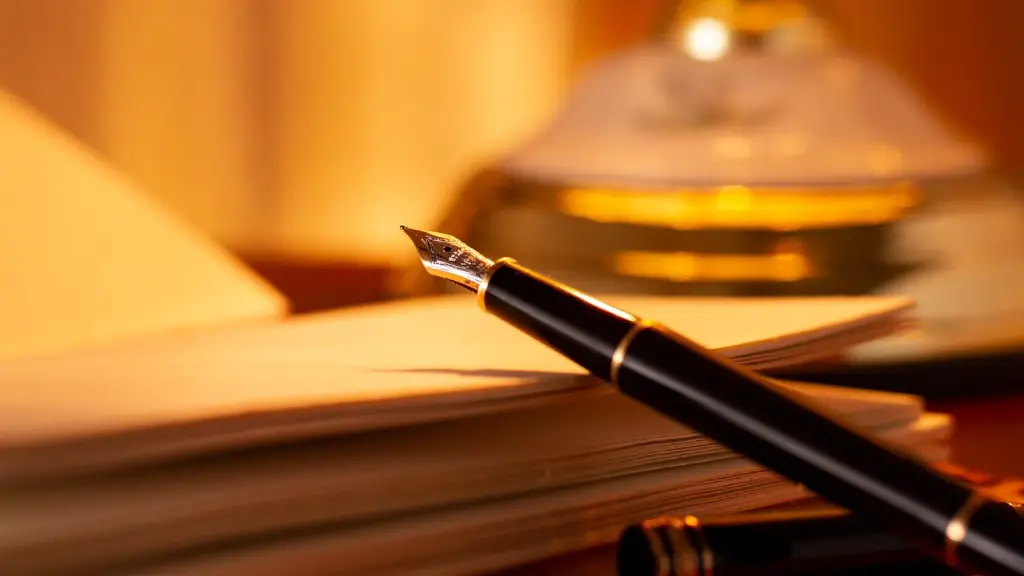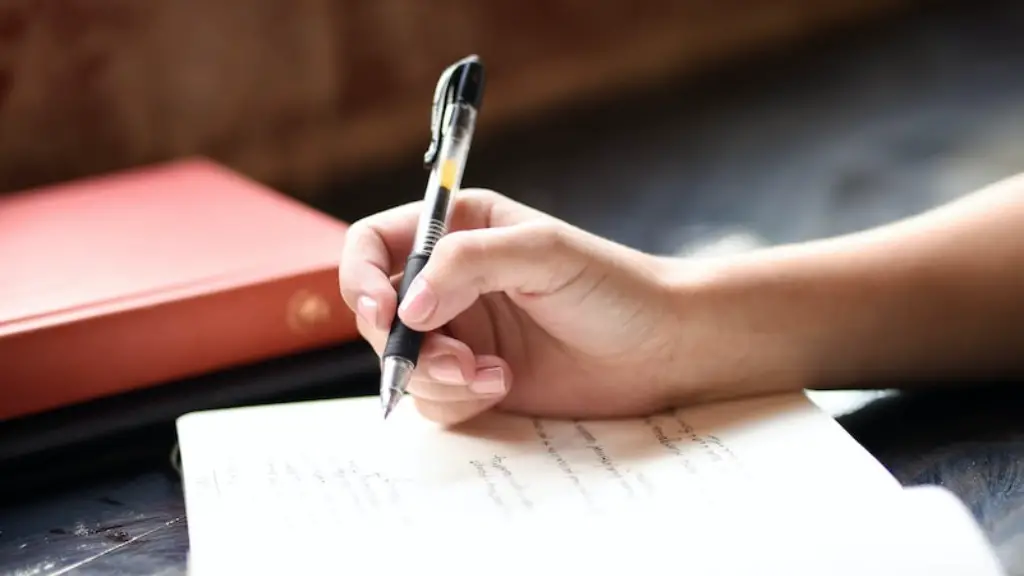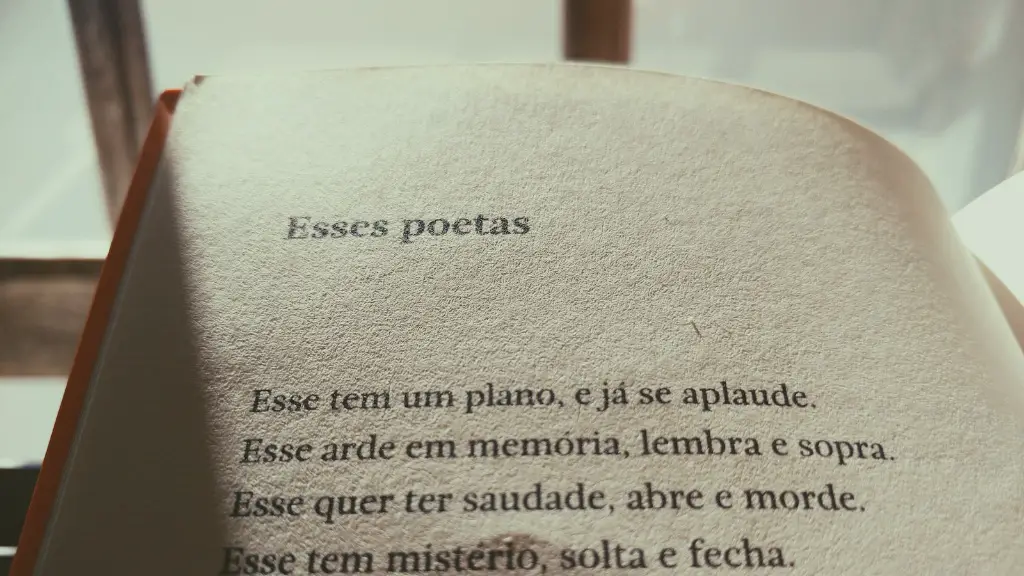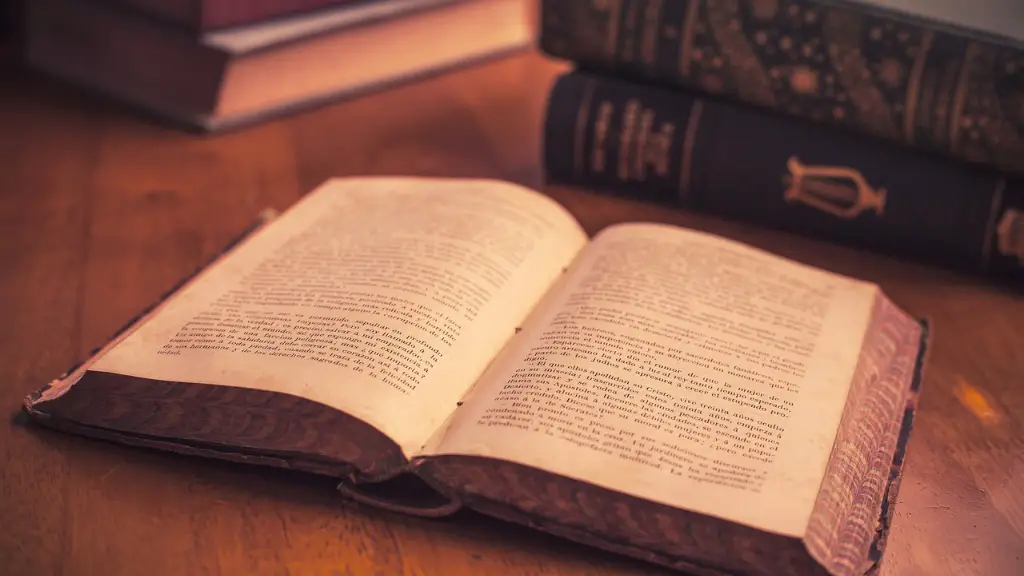Motif, in poetry, is a recurring image, phrase, or concept that is used to emphasize central ideas, characters, or themes in a work of literature. It is the quickening emotion created when a writer has trained the art and skill of choosing with specific intent the words, sounds, and images that bring the poem to life.
The use of motifs in literature is widespread; from ancient religious scriptures and poems to contemporary novels, stories, and songs. It is a powerful tool in the hands of any writer and often provides a subtle way to express feelings and emotions.
A motif can not only be a single word or phrase, but can include traditional literary elements and symbols such as characters, settings, objects, places, and more. It is used by writers to evoke emotion in the readers and create a lasting impression. For example, a storm might symbolize a troubled state of mind while a sun may represent hope or redemption.
Motifs can provide an insight into the feelings and emotions of the characters in a story. Therefore, through the use of motifs, writers may be able to communicate deeper themes and messages. It also helps to emphasize a point or idea, such as a character’s development or a plot point.
When visualizing a motif in poetry, the image that is created is typically much more abstract than those found in other types of writing. A poet may choose to use colors, shapes, and objects to express their thoughts and feelings. The use of repetition or parallel sentences and ideas can also be effectively used to emphasize or draw attention to a particular motif.
Motifs are an essential part of any poem, as they help to create an atmosphere, a mood, and an overall structure. The motif will often become the main focus of the poem, so it’s important that it has a strong presence in the work. By focusing on one particular element, the poem can become simplified, allowing the audience to more easily understand and appreciate the writer’s message.
Though it may be difficult to come up with the right motifs for a particular poem, the end result can be very rewarding. By carefully selecting the appropriate motifs and placing them strategically within the poem, it is possible to create a powerful, lasting impression on the reader.
Types of Motifs in Poetry
The types of motifs that are used in poetry are often dependent on the time period and style of the poem. In earlier eras, poets tended to use religious motifs to convey a moral or spiritual message. In the modern era, poets have more freedom in the types of motifs they choose, including themes of love, loss, and nature. While these kinds of motifs are more common, there are still many other types that can be used to effectively enhance a poem.
Common motifs used in poetry include death, desire, darkness, memories, dreams, pain, and joy. These can be represented in a variety of ways, such as symbols, metaphors, and imagery. When used properly, these motifs can help to convey a strong message or emotion to the reader.
It is important to remember that the use of motifs does not necessarily make a work of literature “better”; rather, it can enhance the work by creating an emotional response in the reader. By carefully selecting and utilizing motifs in their work, writers can create striking and memorable works of poetry.
Examples of Motifs in Poetry
Examples of motifs in poetry can be found in works by many famous poets, such as William Wordsworth and Emily Dickinson. In Wordsworth’s poem “Lines Composed a Few Miles Above Tintern Abbey”, some of the motifs he uses include nature and memory. Dickinson’s poem “Hope is the Thing With Feathers” includes motifs of hope and mortality.
Examples of motifs can also be found in more contemporary works. For example, the late poet Lucille Clifton’s poem “the lost baby poem” includes motifs of motherhood and loss. Another example is Maya Angelou’s poem “Still I Rise” which contains motifs of strength and resilience.
Symbolism and Motifs in Poetry
Symbolism and motifs are closely related concepts and they often go hand in hand. Symbolism is the use of symbols to represent certain abstract ideas. It is a powerful tool in poetry and can be used to evoke emotions, ideas, and more. Exact symbols used in a poem can be seen as motifs, as they help to convey the poet’s message and evoke certain feelings in the audience.
Symbolism can also be used to deepen the themes of the poem. By adding symbols, such as animals and objects, to a poem, a writer can create a more vivid and meaningful experience for the reader. Symbols can help the reader to connect with the poem on a deeper level and create a more powerful emotional response.
Conclusion
Motifs in poetry are an essential tool for any poet. By carefully selecting and including motfs in their work, writers can create a lasting impression on their readers and evoke strong emotions. They can also add symbolism to deepen the meaning of the poem and create a powerful and meaningful experience for the reader.



